Technologies
PSVR 2 vs. Quest 2: Which Should You Buy, or Should You Wait?
Two very different VR headsets compared — and you may also want to wait for the inevitable Quest 3.
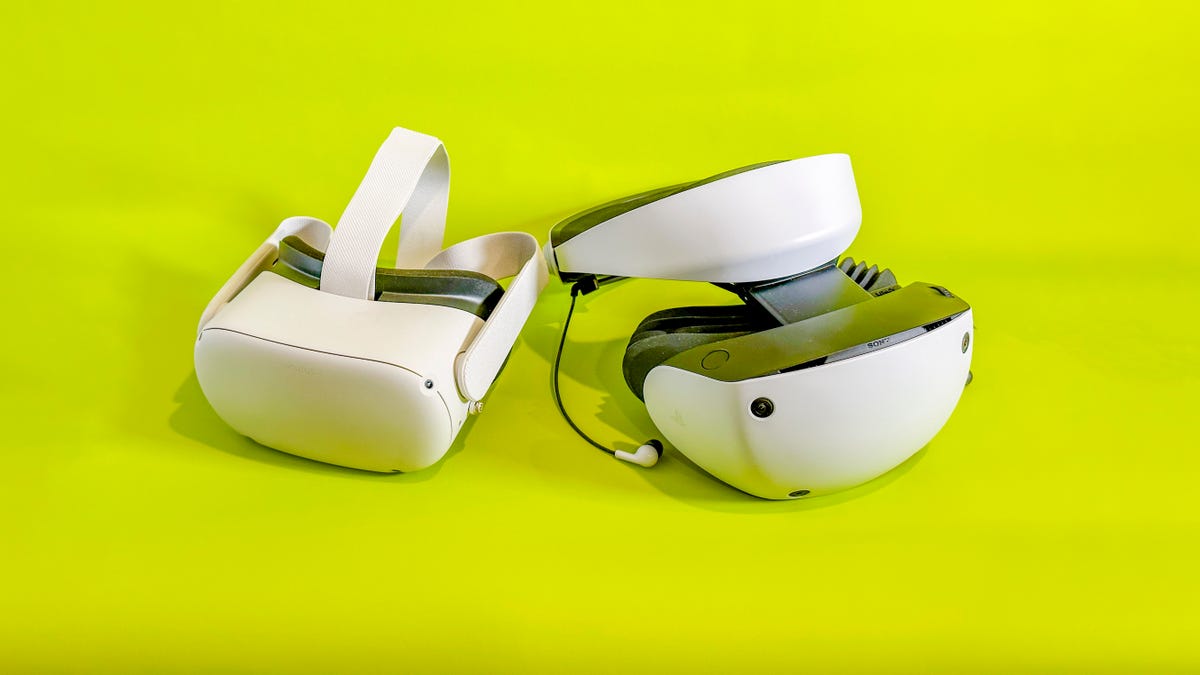
Sony’s PlayStation VR 2 is the PlayStation 5’s first dedicated VR headset, but 2023 is just getting started. With Meta’s Quest 3 expected by the end of the year and Apple’s unknown VR/AR headset expected to make an appearance as well, this isn’t necessarily the best time to get a VR headset. But we love a lot of what the PSVR 2 offers, even if it’s currently limited to a smaller game library and needs a wired connection to a PS5.
The Quest 2 is the most successful VR headset, although it’s over two years old. Here’s how these two devices differ and what each is best at. My colleague Justin Eastzer and I deeply discussed the topic in the video embedded in this story.
For more, read CNET’s PSVR 2 review and Quest 2 review, and check out our favorite Quest 2 games and PSVR 2 games.
Read more: Best VR Headsets of 2023
Hardware: Standalone vs. cabled
The Quest 2 is a fully self-contained VR game system; nothing else is required. For its $399 (£399, AU$630) price, that’s a huge advantage that other competitors are still trying to match.
The $550 (£530, AU$880) PlayStation VR 2, meanwhile, is tethered to a nearly 15-foot cable that needs to be plugged into a PlayStation 5. It doesn’t work on its own at all. It’s really a headset extension of your PS5.
That difference in design makes a bigger impact than you might think. The Quest 2’s portability also means it’s an easy headset to set up for full-motion VR gaming and fitness games and apps. Games like Beat Saber, and fitness apps like Supernatural, are some of the best things you can do on the headset.
The PSVR 2’s cable is long, and it feels heavy. The one-cable setup and its self-contained in-headset camera-based tracking are a lot easier to set up than the original PSVR was, but it’ll still need to live wherever your PS5 lives, and makes the PSVR 2 a better sit-down or stand-in-place experience than a full-motion one.
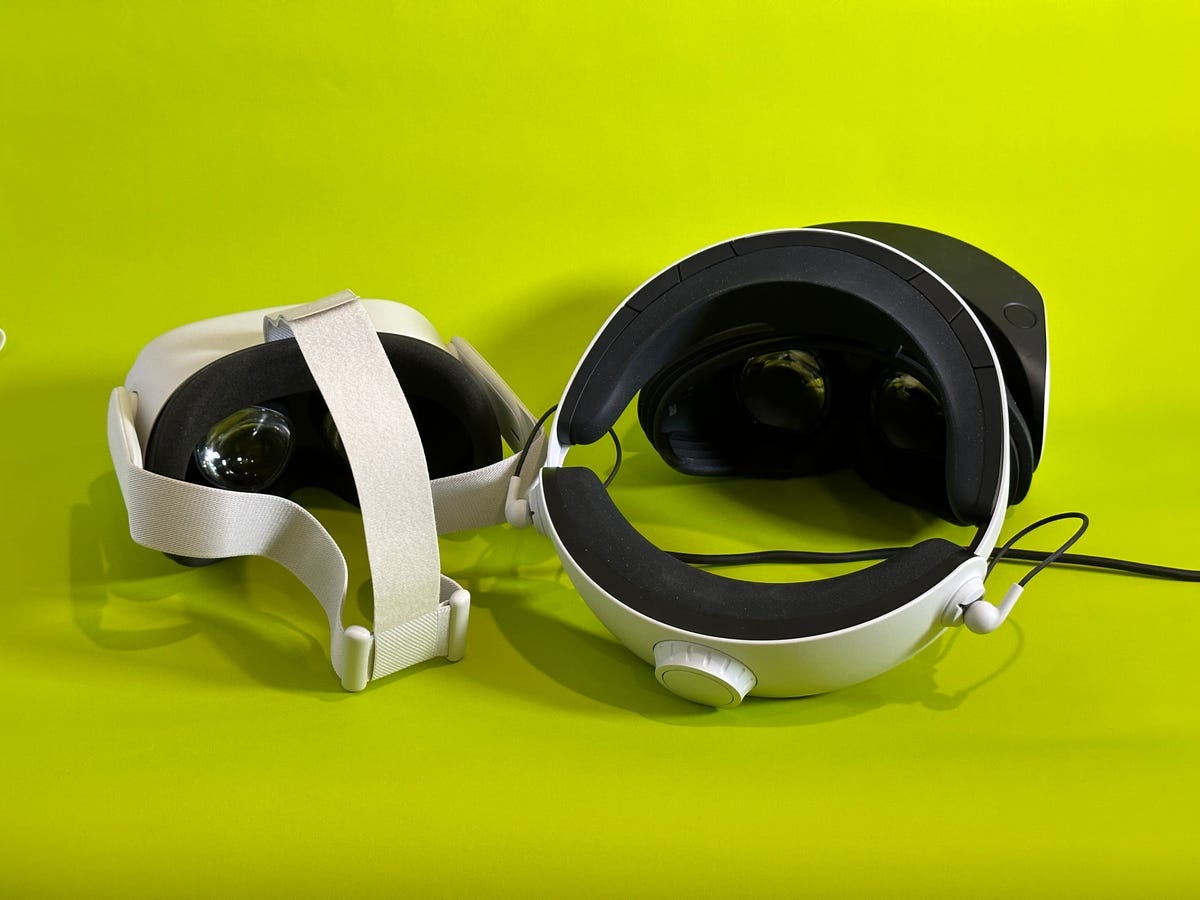
The Quest 2 (left) is more compact, but has less impressive graphics and optics. The PSVR 2 fits my glasses better, is comfier, but it’s bigger.
Scott Stein/CNETDisplays and audio: PSVR 2 has a big edge, mostly
The Quest 2’s LCD-based display is pretty sharp (1,832×1,920 pixels per eye), but the PSVR 2’s 2,000×2,040 pixel-per-eye HDR OLED display is higher res, more vivid and has much better contrast and black levels. Colors are bright and rich. On top of that, the PSVR 2’s ability to drive PS5-quality graphics means games have greater detail than the Quest 2. The latter uses an integrated Snapdragon XR2 mobile processor that’s less powerful, although the Quest 2 can be tethered to a gaming PC, which lets it play higher-end games similarly to the PS5.

The PSVR 2 (right) can adjust its distance from your face, but its visor design is bulkier.
Scott Stein/CNETThe Quest 2 has speakers that pump 3D audio near your ears but still lets other sounds in, which is bad for cinematic experiences but good for hearing kids or alarms — handy when absorbed in VR. It also has a headphone jack. The PSVR 2 has included earbuds for 3D audio but no speakers, which means you’re far more isolated when listening to audio. The earbuds sound OK, but Sony’s wireless Pulse 3D over-ear headphones (sold separately) offer better sound. The PSVR 2 has a headphone jack too, just like the Quest 2.
The PSVR 2 also adds an extra couple of immersive wrinkles. The headset uses eye tracking to boost graphics quality where your eyes are looking via foveated rendering technology. The headset also has rumble, which sounds gimmicky but can feel like an extension of bass vibrations in-game, adding an overlap between sound and immersive sensation.
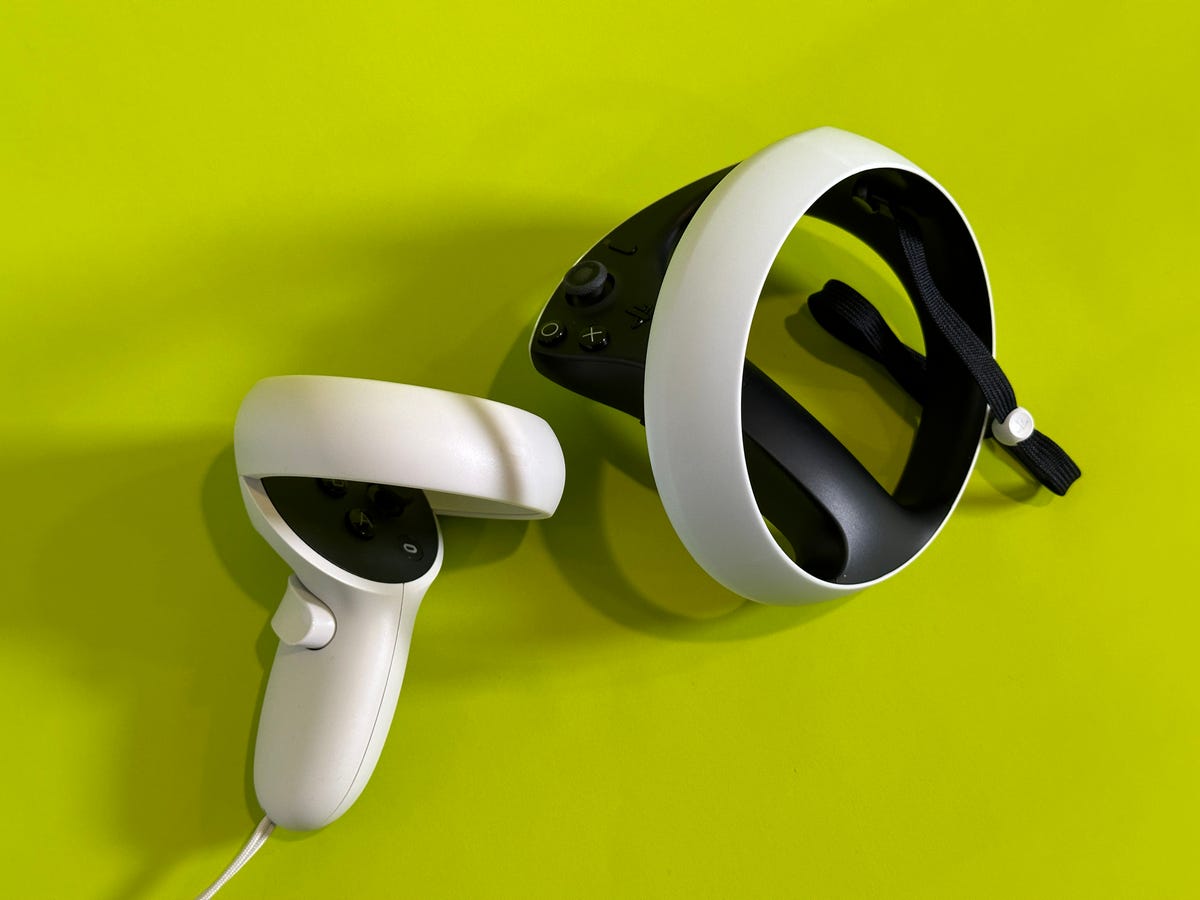
The Quest 2 Touch controller (left) and PSVR 2 Sense controller: Similar button/stick/trigger layout, but the PSVR 2 has better haptics and force feedback, while the Quest 2 has better finger sensing off-button.
Scott Stein/CNETControllers and input: PSVR 2 has better haptics and eye tracking, Quest 2 has hand tracking
The PSVR 2 and Quest 2 have the same type of controller design, mostly: VR headsets have settled on buttons, analog sticks, triggers and grips that are pretty consistent across the board. The PSVR 2 Sense controllers have much better vibration feedback and even force-feedback «adaptive triggers» that offer resistance in some games. These are features the PS5 DualSense controller already has, but they feel a lot richer in VR than the Quest 2’s pretty basic buzzing. The PSVR 2 also uses eye tracking to add additional controls in some games, letting you glance at objects to select them, potentially improving accuracy.
The Quest 2 has better finger awareness when holding the controllers, sensing when your fingers are on or off, or even resting on the buttons or triggers. This awareness can create sensations that feel like hand tracking. The PSVR 2 doesn’t do this nearly as well yet. Also, the Quest 2 can do actual hand tracking without needing any controllers. This input type isn’t perfect, but it can be helpful… and the PSVR 2 doesn’t do this at all (yet).
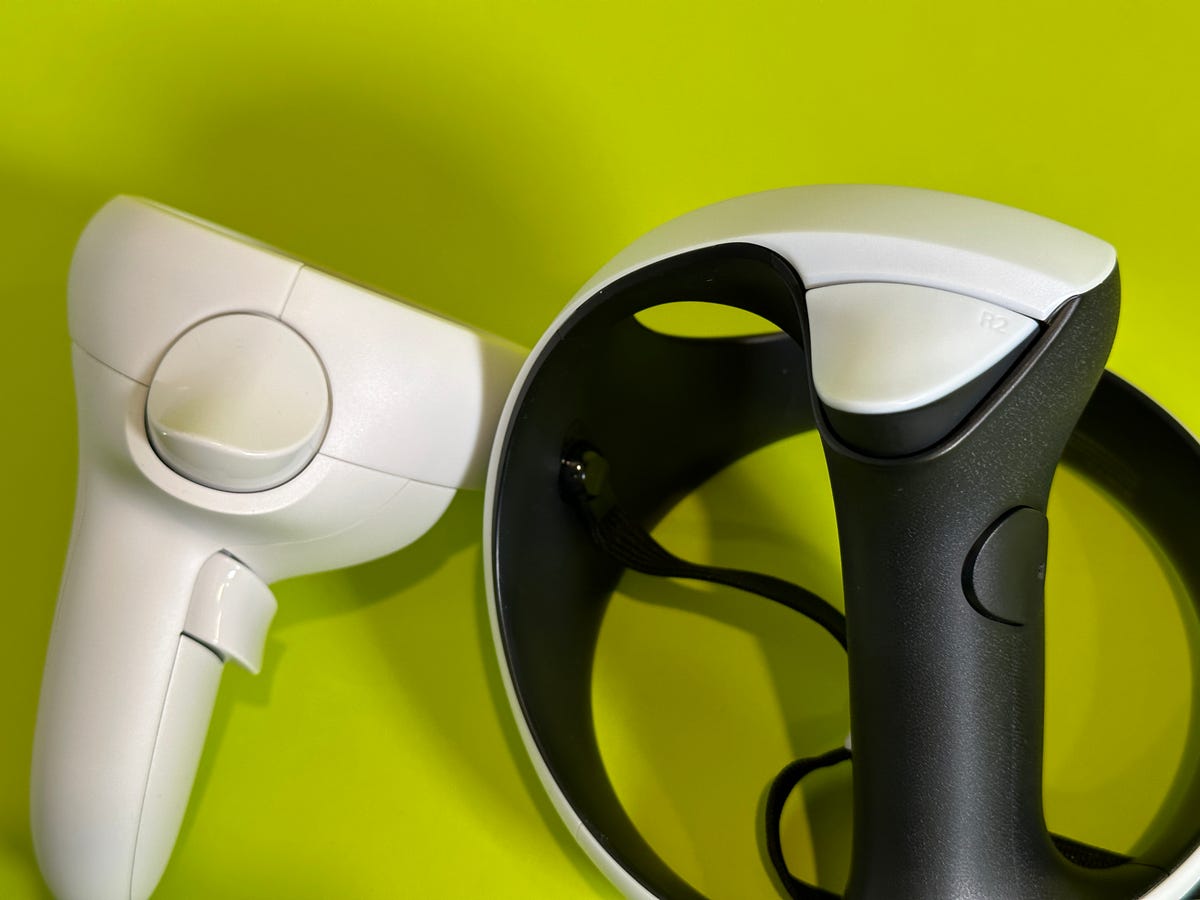
The PSVR 2’s triggers (right) have pressurized force feedback you can feel, which gives an edge for some games.
Scott Stein/CNETSoftware: Quest 2 has a huge advantage (for now), PSVR 2 has some standouts
The Quest 2’s software library covers hundreds of games, productivity and design apps, fitness apps, meditation apps and social world apps. There are also plenty of free apps and games. The Quest platform has been around since 2019, giving it a big lead time. The PSVR 2 is starting from scratch. The hardware isn’t automatically backward-compatible with original PSVR games. Although many of those games are getting PSVR 2 upgrades, it means waiting for the updates to happen, if they do at all.
For now, the PSVR 2 is also skipping entire genres found on the Quest 2. The PSVR 2 is all games, as you’d expect. There should be a few fitness apps (Les Mills Body Combat is already available) but no social world apps. That might be comforting for parents with younger kids, but it leaves out extra uses you could get from the still-evolving Quest 2.
Additionally, most of the PSVR 2 launch games are ports of games on the Quest 2. Only a few are unique standouts that the Quest 2 natively lacks: notably Horizon Call of the Mountain, Gran Turismo 7, Resident Evil Village and No Man’s Sky, with more coming.
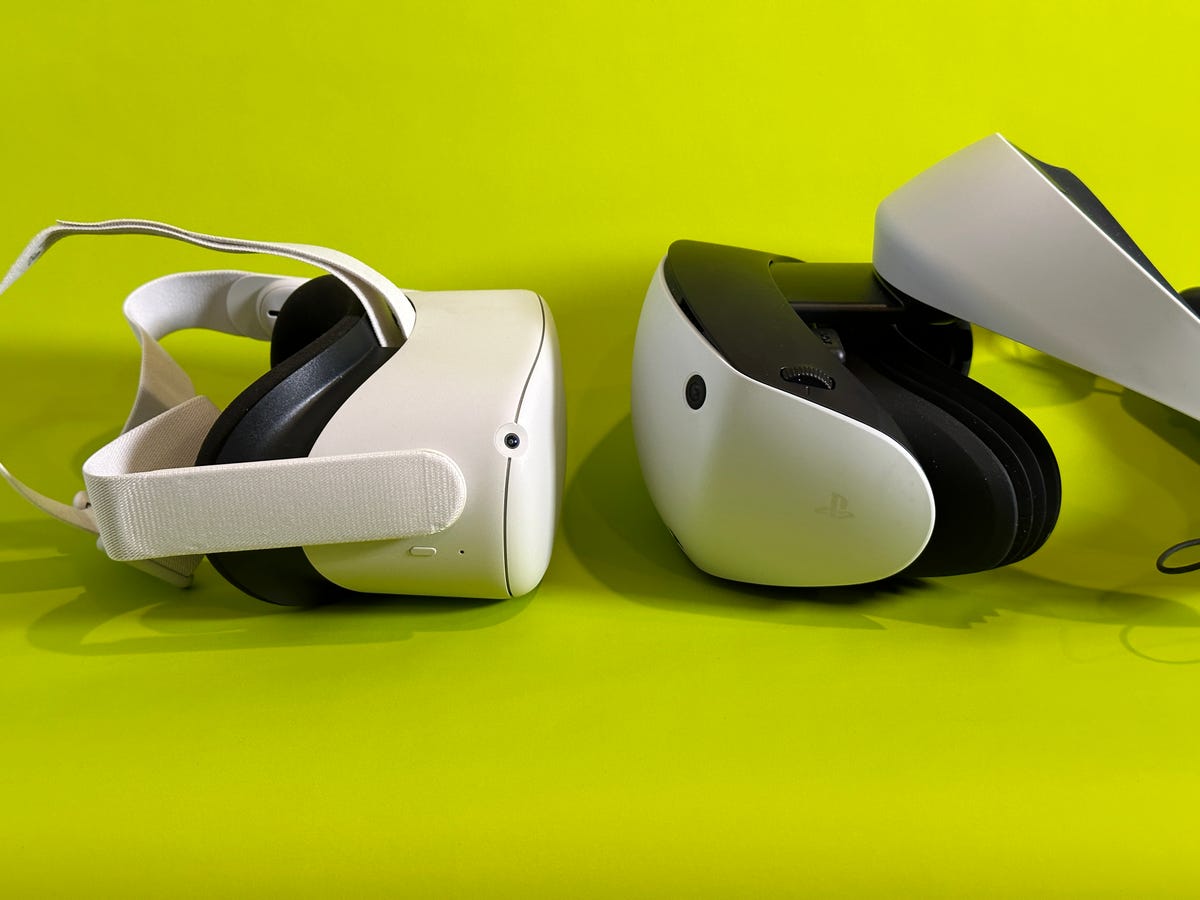
The PSVR 2 (right) has eye tracking and more adjustable eye distance, or IPD, while the Quest 2 lacks eye tracking and has only three IPD settings.
Scott Stein/CNETPrice: Quest 2 has the edge
The $399 all-in value of the Quest 2 is a big advantage here. The PSVR 2 is more expensive at $550, and you still need the PS5, making it a $1,000-plus investment. But the Quest 2 is getting old, and a Quest 3 will likely come later this year that you should hold off for.

Yes, you should wait
Now is the time to wait and see what comes for VR. The Quest 3, expected by the end of the year, should be a clear upgrade over the nearly three-year-old Quest 2, and there’s a chance that many more games (and even a holiday bundle) will upgrade the PSVR 2 experience by year’s end. If you can, I’d hang on and see what the situation looks like for both Meta and Sony in the fall.
If you already have a Quest 2, the PSVR 2 doesn’t offer enough yet to make the switch. And if you’re a PS5 owner who doesn’t mind spending a bunch of money on new tech, the PSVR 2 is already a fun experience, just one we can’t quite get a future sense of yet.
Technologies
Two Cryptocurrencies in One Messenger: Verum Messenger Adds Bitcoin Mining
Two Cryptocurrencies in One Messenger: Verum Messenger Adds Bitcoin Mining

The private Verum Messenger, primarily chosen by users for secure communication, now offers a new way to use the app. To the existing ability to mine its native Verum Coin cryptocurrency, Bitcoin mining has been added. Both functions operate in parallel within a dedicated tab of the messenger.
The Convenience of Built-in Mining
The main advantage of this solution is its simplicity. Users do not need to:
- Install additional software
- Study complex setup instructions
- Undergo additional verification checks
- Mining is activated in a separate application tab, and the mined funds can be withdrawn to an external crypto wallet at any time.
The Evolution of a Private Messenger
The addition of Bitcoin mining is a logical step in the evolution of the Verum Messenger ecosystem. The app is gradually transforming from a simple communication tool into a multifunctional platform.
In addition to mining, the following features are already available:
- A built-in VPN for secure connections
- eSIM with internet access in 150+ countries
- Full encryption of all data
- The ability to completely delete chat history and setting
What This Changes
Verum Messenger now offers users not just a protected space for communication, but also the ability to earn cryptocurrency simultaneously. This is especially valuable for those who want to get started with mining without delving into technical complexities.
This approach aligns with the project’s overarching philosophy — to create secure and user-friendly digital solutions that offer more opportunities while maintaining confidentiality.
Technologies
Today’s NYT Connections: Sports Edition Hints and Answers for Nov. 30, #433
Here are hints and the answers for the NYT Connections: Sports Edition puzzle for Nov. 30, No. 433.
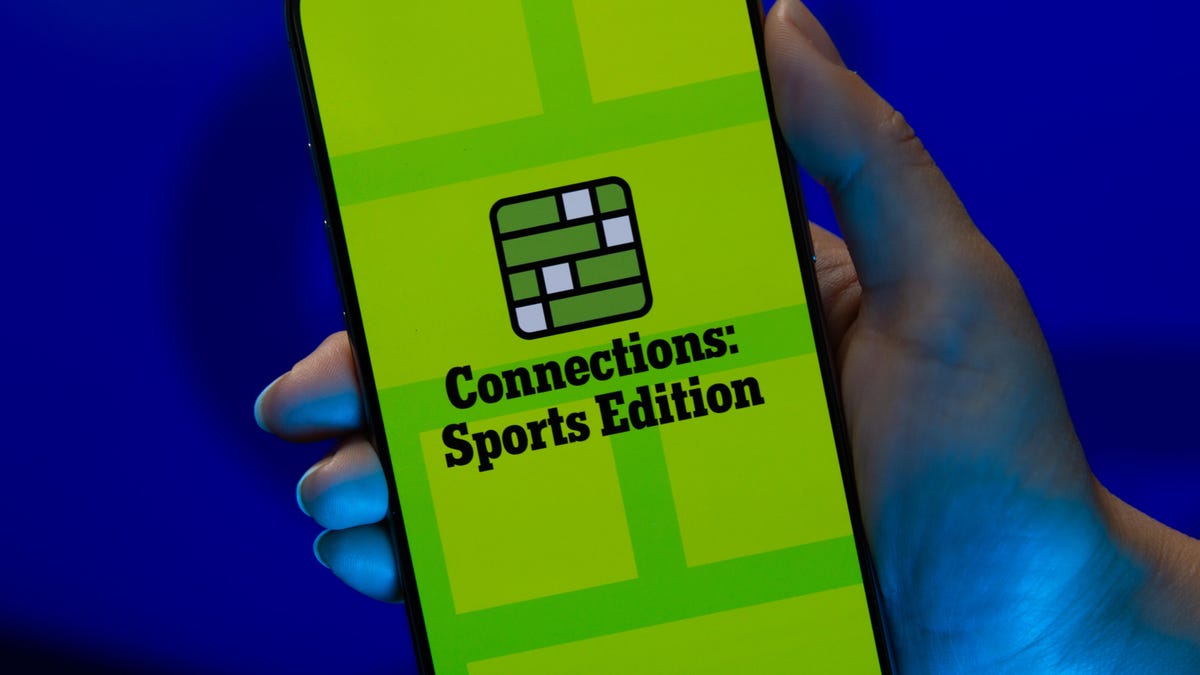
Looking for the most recent regular Connections answers? Click here for today’s Connections hints, as well as our daily answers and hints for The New York Times Mini Crossword, Wordle and Strands puzzles.
Today’s Connections: Sports Edition is a tough one. If you’re struggling with today’s puzzle but still want to solve it, read on for hints and the answers.
Connections: Sports Edition is published by The Athletic, the subscription-based sports journalism site owned by The Times. It doesn’t appear in the NYT Games app, but it does in The Athletic’s own app. Or you can play it for free online.
Read more: NYT Connections: Sports Edition Puzzle Comes Out of Beta
Hints for today’s Connections: Sports Edition groups
Here are four hints for the groupings in today’s Connections: Sports Edition puzzle, ranked from the easiest yellow group to the tough (and sometimes bizarre) purple group.
Yellow group hint: Gridiron gains.
Green group hint: Get a kick out of it.
Blue group hint: Baseball legend.
Purple group hint: Rocky Mountain team.
Answers for today’s Connections: Sports Edition groups
Yellow group: Football scoring plays, abbreviated
Green group: North American soccer leagues.
Blue group: Associated with Ted Williams.
Purple group: Members of the Denver Broncos, familiarly.
Read more: Wordle Cheat Sheet: Here Are the Most Popular Letters Used in English Words
What are today’s Connections: Sports Edition answers?
The yellow words in today’s Connections
The theme is football scoring plays, abbreviated. The four answers are 2-pt, FG, PAT and TD.
The green words in today’s Connections
The theme is North American soccer leagues. The four answers are LIGA MX, MLS, NWSL and USL.
The blue words in today’s Connections
The theme is associated with Ted Williams. The four answers are .406, LF, Red Sox and Splendid Splinter.
The purple words in today’s Connections
The theme is members of the Denver Broncos, familiarly. The four answers are Bo, Courtland, RJ and Troy.
Don’t miss any of our unbiased tech content and lab-based reviews. Add CNET as a preferred Google source.
Technologies
The Best Sound Is Still Highly Discounted for Cyber Monday. Listen Close for 55+ Headphone Deals Now
-

 Technologies3 года ago
Technologies3 года agoTech Companies Need to Be Held Accountable for Security, Experts Say
-

 Technologies3 года ago
Technologies3 года agoBest Handheld Game Console in 2023
-

 Technologies3 года ago
Technologies3 года agoTighten Up Your VR Game With the Best Head Straps for Quest 2
-

 Technologies4 года ago
Technologies4 года agoBlack Friday 2021: The best deals on TVs, headphones, kitchenware, and more
-

 Technologies4 года ago
Technologies4 года agoVerum, Wickr and Threema: next generation secured messengers
-

 Technologies4 года ago
Technologies4 года agoGoogle to require vaccinations as Silicon Valley rethinks return-to-office policies
-

 Technologies4 года ago
Technologies4 года agoOlivia Harlan Dekker for Verum Messenger
-

 Technologies4 года ago
Technologies4 года agoiPhone 13 event: How to watch Apple’s big announcement tomorrow


